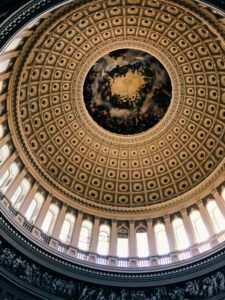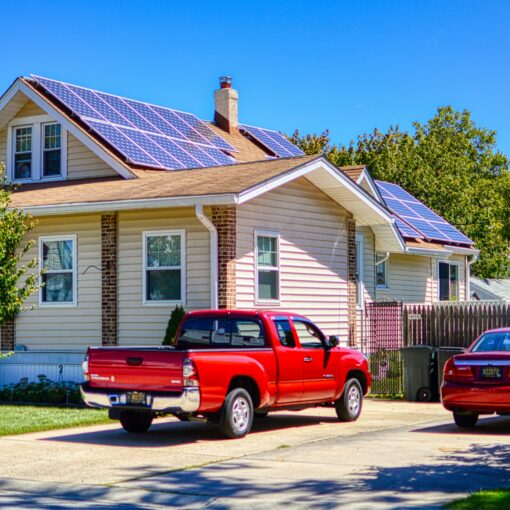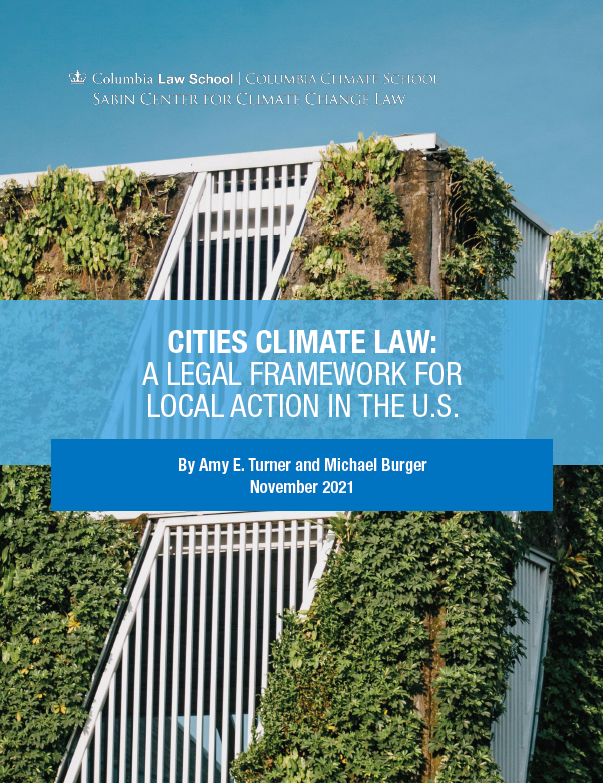 On April 8, 2025, President Trump issued an Executive Order entitled “Protecting American Energy from State Overreach,” which directs the U.S. attorney general to work with department and agency heads to “identify all State and local laws, regulations, causes of action, policies, and practices (collectively, State laws) burdening the identification, development, siting, production, or use of domestic energy resources that are or may be unconstitutional, preempted by Federal law, or otherwise unenforceable.” The attorney general is then directed to “expeditiously take all appropriate action to stop the enforcement of State laws that the Attorney General determines to be illegal.” In particular, the attorney general is to “prioritize the identification of any such State laws purporting to address ‘climate change’ or involving ‘environmental, social, and governance’ initiatives, ‘environmental justice,’ carbon or ‘greenhouse gas’ emissions, and funds to collect carbon penalties or carbon taxes.” A report from the attorney general on recommended executive and legislative actions is due in 60 days. This blog post provides some initial thoughts on what might happen after that.
On April 8, 2025, President Trump issued an Executive Order entitled “Protecting American Energy from State Overreach,” which directs the U.S. attorney general to work with department and agency heads to “identify all State and local laws, regulations, causes of action, policies, and practices (collectively, State laws) burdening the identification, development, siting, production, or use of domestic energy resources that are or may be unconstitutional, preempted by Federal law, or otherwise unenforceable.” The attorney general is then directed to “expeditiously take all appropriate action to stop the enforcement of State laws that the Attorney General determines to be illegal.” In particular, the attorney general is to “prioritize the identification of any such State laws purporting to address ‘climate change’ or involving ‘environmental, social, and governance’ initiatives, ‘environmental justice,’ carbon or ‘greenhouse gas’ emissions, and funds to collect carbon penalties or carbon taxes.” A report from the attorney general on recommended executive and legislative actions is due in 60 days. This blog post provides some initial thoughts on what might happen after that.
The executive order provides several examples of the kinds of laws in the crosshairs, though its directives are far broader than just the few named policies. It references New York’s and Vermont’s Climate Superfund Laws, which require fossil fuel companies to pay damages for their share of greenhouse gas emissions over specified time periods. The order also identifies California’s Cap-and-Trade program, and broadly refers to state “delay[s]” in the review of permit applications for fossil energy projects and to states that have sued oil companies for climate damages. The order also asserts that some “States target or discriminate against out-of-State energy producers by imposing significant barriers to interstate and international trade.” No local laws are identified in the order itself, though some are almost certain to appear in the attorney general’s report.
Without more specificity, many questions will remain unanswered until the state and local laws identified by the attorney general become public. However, some legal framing can help delineate what to expect, and what can and cannot be accomplished by this order, or by the president, attorney general, or executive branch acting alone.
The executive order does little in itself beyond direct the review of state and local climate laws the attorney general’s office will take over the next two months. It does not directly challenge, prohibit, argue preempted, or enjoin any state or local law. But it is likely a forerunner to litigation, lawmaking, or the withholding of federal funds. As the targeted laws and the ways in which the administration intends to challenge them becomes clearer, so too will next steps to defend them.
On the litigation front, one can imagine a slew of lawsuits, however baseless, alleging preemption of state and local policies by federal law, as well as violations of the U.S. Constitution. For example, the first Trump administration sued the state of California challenging the linkage of its cap-and-trade program to a cap-and-trade program in Quebec, Canada, in alleged violation of the Constitution’s Article I prohibition on entry by a state into a treaty. California prevailed in that suit. Of course, even meritless litigation can be devastating to a local government without sufficient resources to engage. If the administration goes the litigation route, we can expect a significant chilling effect on local climate policy innovation.
But litigation can only do so much. To bring a preemption case, for example, the administration will need to be able to point to some federal law that expressly or impliedly conflicts with or occupies the same field as a challenged state or local law. To be sure, there can be ambiguities in whether and when provisions of federal law preempt certain state and local laws (for example, the court split in whether the Energy Policy and Conservation Act (EPCA) preempts local building electrification policies), and the administration will no doubt try to be creative in its arguments. But, in the end, if the administration wants to argue that the Vermont or New York Climate Superfund Laws or other state or local actions are preempted, it will have to point to the federal law sources of such alleged preemption. New sources of preemption – or other federal laws disallowing certain state or local action – would have to come from Congress. The executive branch cannot change federal law on its own, and any new legislation would likely have to pass the 60-Senator threshold to advance out of the Senate, which may prove difficult.
The withholding of federal funding could pose a more immediate risk. A White House fact sheet issued alongside the executive order points to another order “revok[ing] federal funding from ‘sanctuary’ states and cities” as one of President Trump’s efforts to “defend[] federalism.” This is, of course, consistent with the sprawling and chaotic federal funding freeze, which has resulted not only in frozen grant accounts but the cancellation of grant agreements specifically because they do not advance administration priorities, or because they involve work the administration does not like (for example, environmental justice work). (As previously reported on this blog, these actions have little (if any) legal basis and are likely to be struck down by the courts, but could still be extremely damaging.)
Bigger picture, what the executive order represents is a complete subversion of the principles of federalism, our nation’s project of dividing power between the federal government and the states (which then further delegate powers to local governments). Federalism is embedded in the U.S. Constitution. The 10thAmendment reads: “The powers not delegated to the United States by the Constitution, nor prohibited by it to the States, are reserved to the States respectively, or to the people.” In other words, the federal government cannot simply grab powers because it wants to; doing so would in no uncertain terms represent a constitutional crisis. The order makes a weak reference to federalism, arguing that the targeted state laws “project[] the regulatory preferences of a few States into all States.” But the possibility for out-of-state impacts stemming from state laws is already well adjudicated in case law relating to the dormant Commerce Clause, which allows for impacts to interstate commerce that are incidental or are not “clearly excessive in relation to the putative local benefits,” among other circumstances. Neither the president nor Congress can amend the Constitution nor change the legal doctrines that help courts interpret it.
In some senses, federalism means we take the good with the bad. Several states and localities, for example, prohibit or make it extremely difficult to site renewable energy projects. These restrictions, to borrow the executive order’s words, stand to “driv[e] up energy costs for families.” Will they end up in the attorney general’s report 60 days from now? I imagine not.
Amy Turner is the Director of the Cities Climate Law Initiative at the Sabin Center for Climate Change Law at Columbia Law School.





